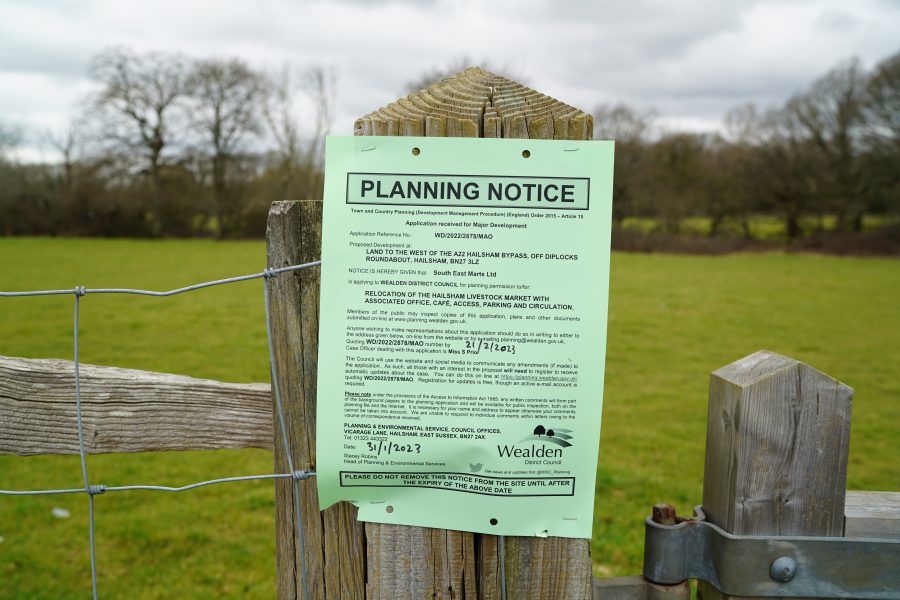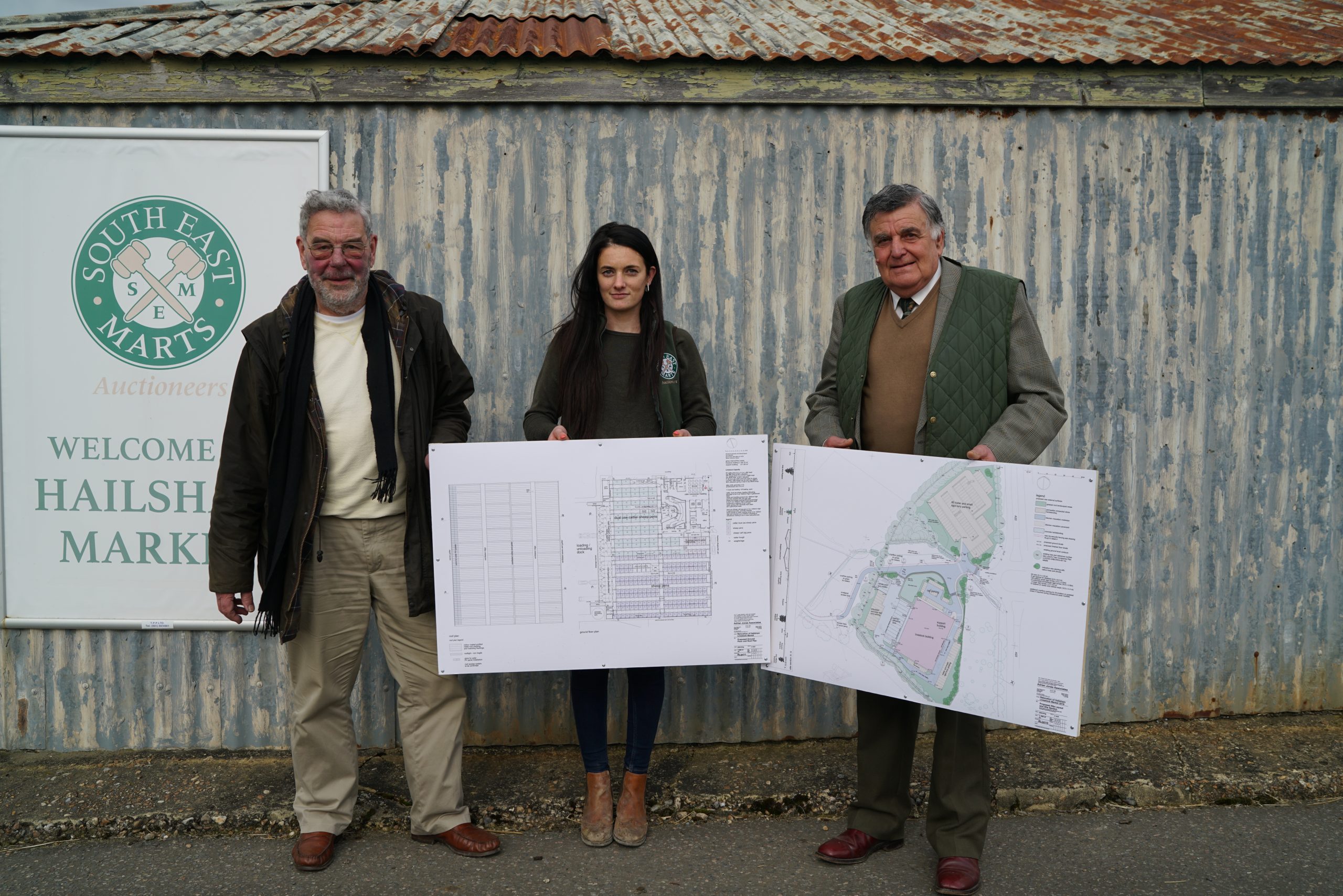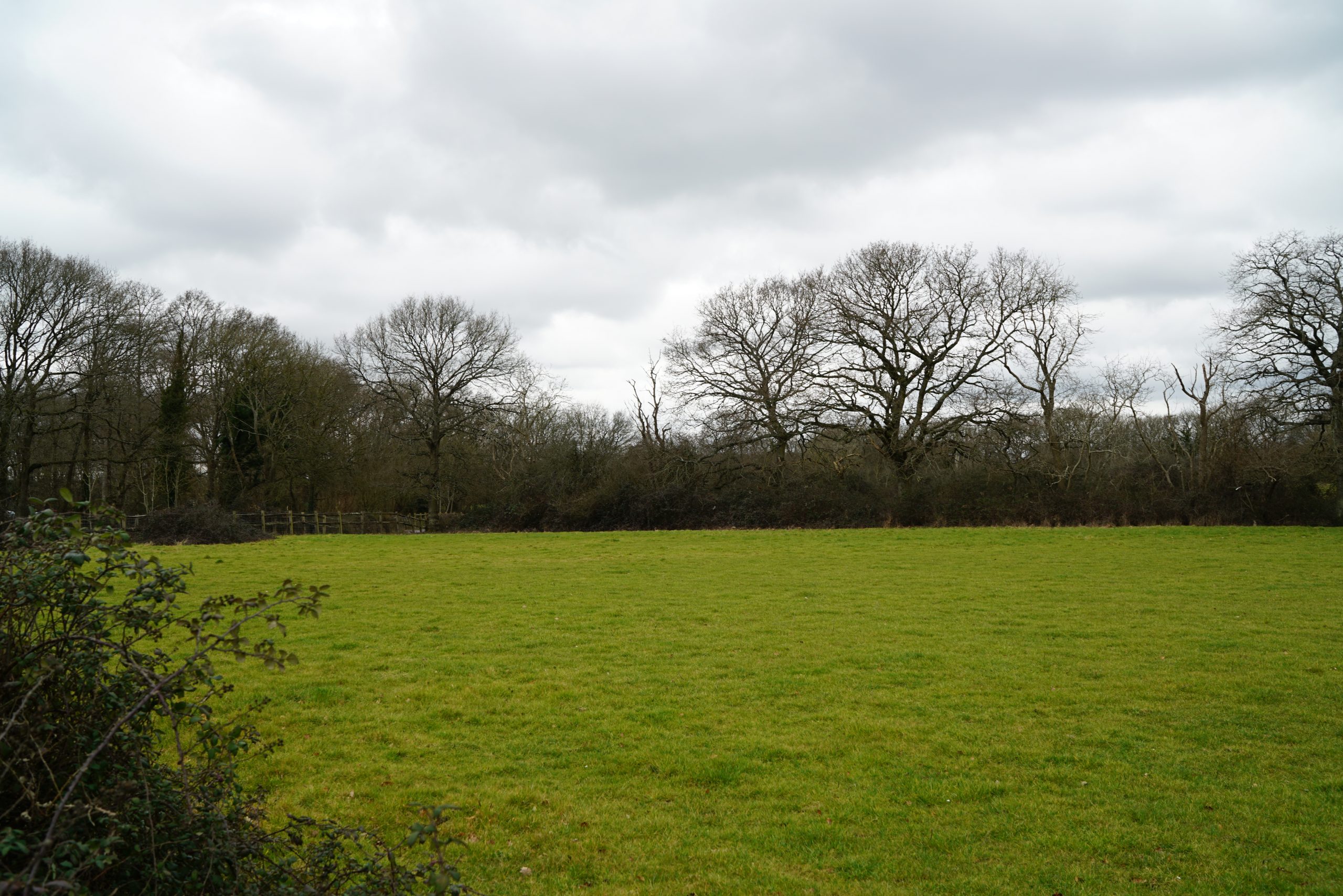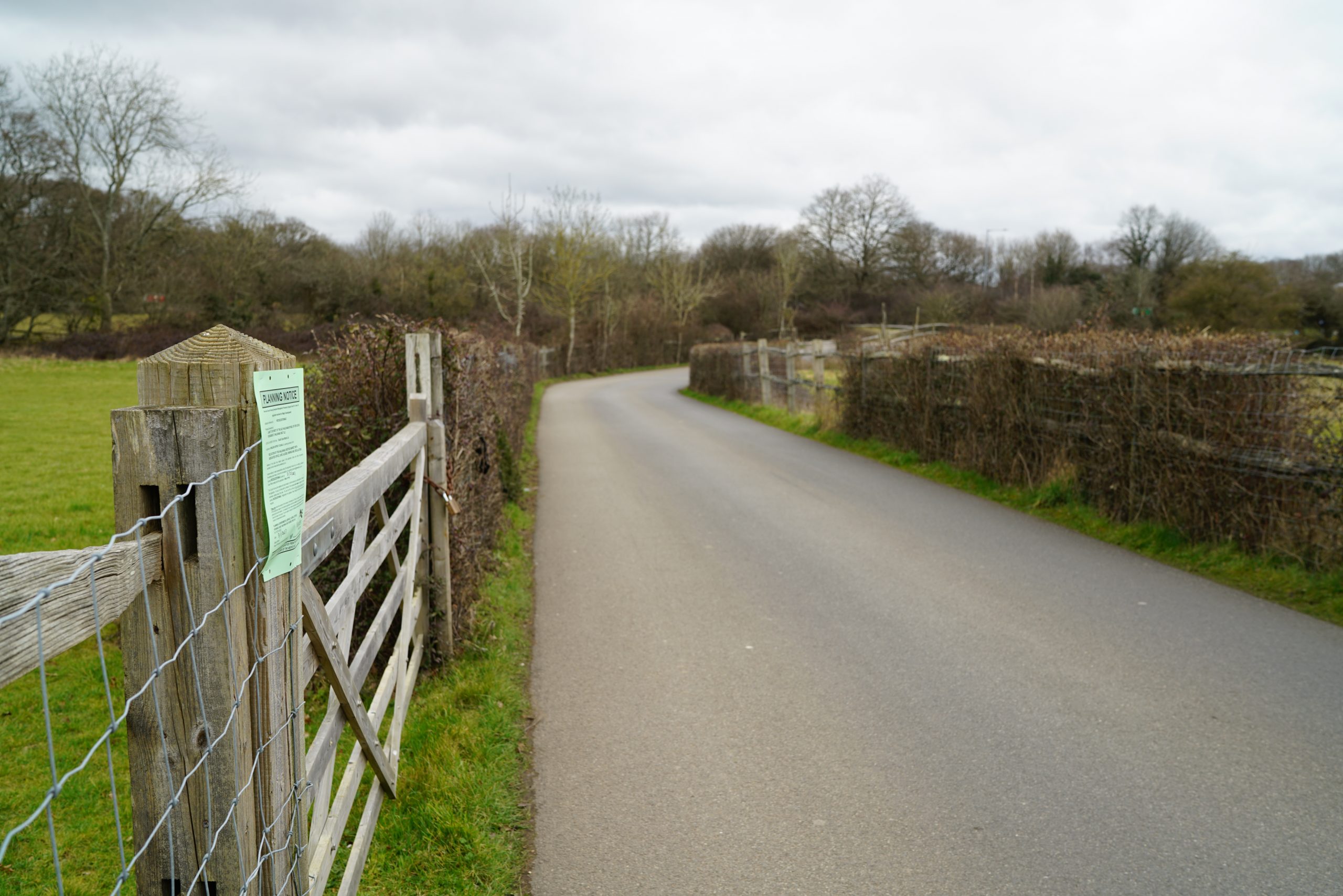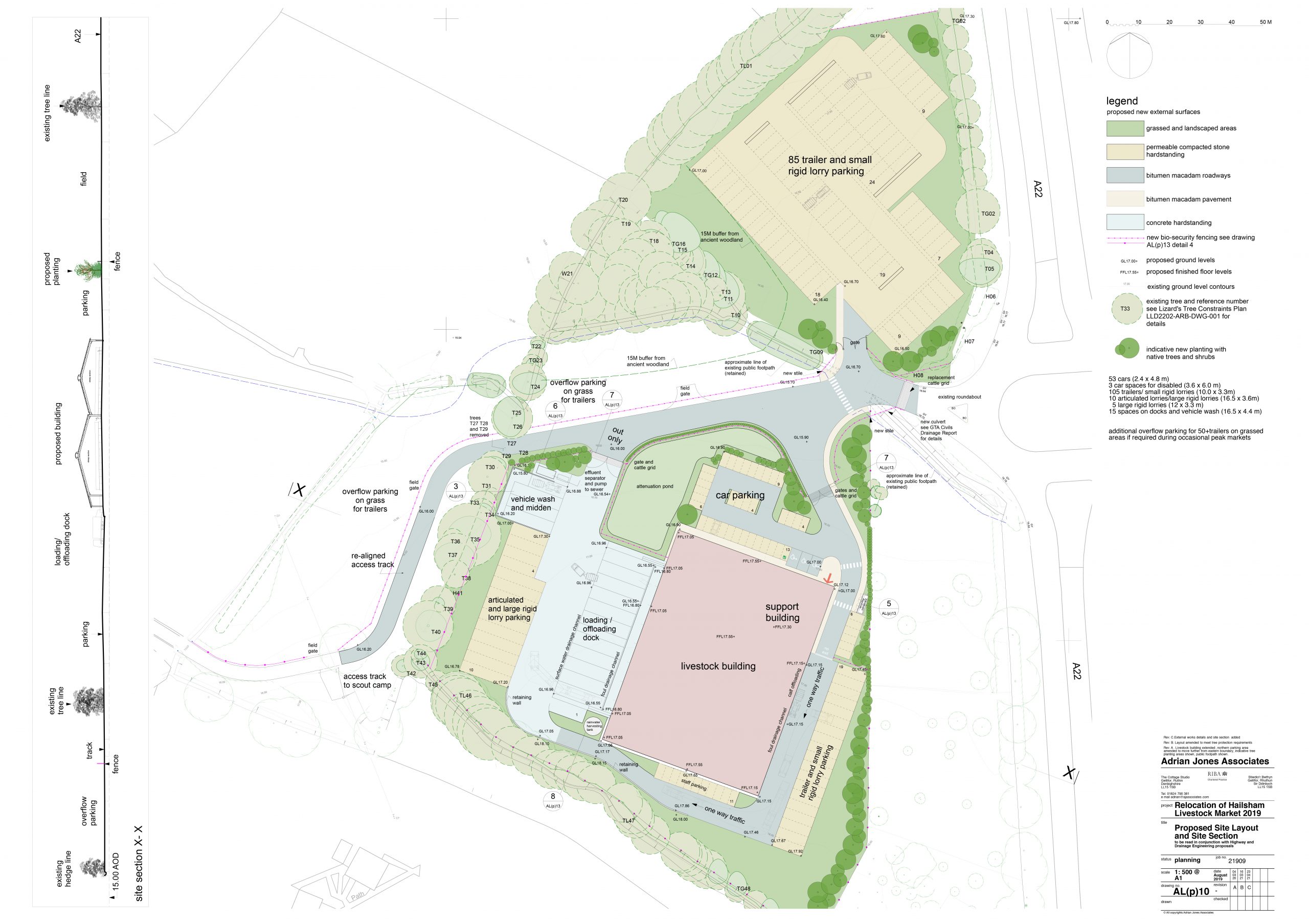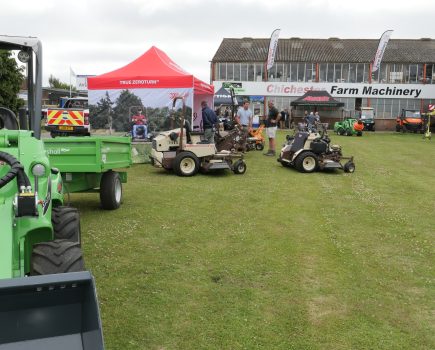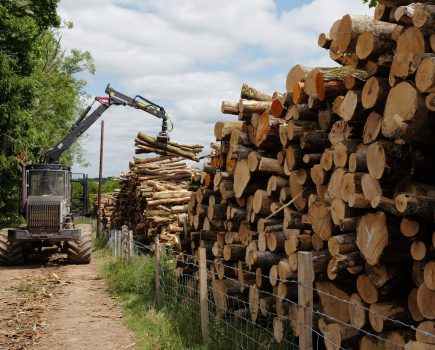This month Nigel Akehurst visits South East Marts Ltd to find out more about their ambitious plans to develop a modern, state-of-the-art market on the outskirts of Hailsham in East Sussex.
As reported in the March edition of South East Farmer, South East Marts is planning to move out of its constrained town centre site in Market Square and invest several million pounds in a new facility on the outskirts of Hailsham, with easy access onto the A22.
It’s a move that has been welcomed by livestock farmers and farming organisations across the region. East Sussex NFU chair Peter Appleton said the relocation was “essential for the long-term viability of the market” and highlighted Hailsham Market’s role “at the heart of the food supply chain” in the area.
To find out more about their plans I visited the current Market Square site to meet South East Marts auctioneer and director Roger Waters and his business partner David White, a landowner and retired commercial solicitor.
“Nearly all markets in town centres have been closed down or relocated to more suitable out-of-town locations with excellent access,” explained Roger. There are just 112 livestock markets remaining in England (down from a peak of 1,000 50 years ago).
Roger pointed out that Hailsham is the only remaining livestock market in Sussex and has retained its importance for good reason.
“One advantage we’ve got here is the landscape around us. The Pevensey Levels, The South Downs National Park, The High Weald AONB and the Ashdown Forest are all dependent upon livestock grazing regimes,” said Roger, who sees a bright future for the business, which sold over 60,000 sheep and between 5,000 and 6,000 cattle last year.
He further points out that a lot of cattle and sheep reared locally are often moved to fattening locations elsewhere where cheaper arable by-products are available
“There’s always been a lot of movement of stock away from the South East and of course it’s got to be sold locally before it moves away. There’s only us, Ashford in Kent, Thame in Oxfordshire and Salisbury in Hampshire left.”
History of the existing and new site
Hailsham is a historic market town and there are records of a charter market dating back to 1252. South East Marts originated from Haywards Heath Market and a company called T Bannister & Co., which was founded in 1866.
In 1988 a restructuring took place with the formation of South East Marts and the joining up of Guildford, Hailsham, Heathfield and latterly Thame and Winslow Markets. In 1990 Haywards Heath Market closed, followed by the smaller market at Heathfield a few years later. In 1995 South East Marts became part of the ADM (UK) Ltd. Group, which was based in Eastbourne, East Sussex.
The livestock auction industry was not helped by the BSE crisis back in the 1990s and market closures for 12 months during the outbreak of foot and mouth disease in 2001. The substantial development of central market sites has seen both Haywards Heath and Guildford Market close. Thame and Winslow market have been sold back to the farming community.
Hailsham Market has managed to remain open but has faced repeated threats of closure from developers wishing to build a supermarket on the site.
In 1997 Sainsbury’s came forward and tried to buy the site but was defeated by a move in Parliament.
In order to buy it they had to promote an act of Parliament to close down the market, explained David. “That went to the House of Lords on the second reading and they withdrew as it became evident that the House of Lords felt that the damage to the economy caused by closing the market without a replacement would be far greater than the benefit of having another superstore.”
Then in 2004 Aldi bought the site and tried to go forward through a planning application rather than a change in the Act of Parliament. It went through the planning process and then went to appeal. The company lost the appeal when the inspector adopted the reasoning of the earlier House of Lords decision and determined that the closure of the livestock market without replacement would cause significant and unacceptable damage to the local rural economy and landscape. After holding on to the site for another 18 months, Aldi offered the site to South East Marts.
New site and funding the relocation
Realising the limitations of the Market Square location as a long-term solution, South East Marts has explored a number of out-of-town sites over the years.
In 2007 it found the site off the Diplocks roundabout, and after speaking to the council took an option to buy it (which it exercised in 2018).
“We approached Wealden Council in 2007. Initially they weren’t overly enthusiastic but at the same time they didn’t say no. It then became apparent they didn’t like the idea of commercial businesses on that side of the road. As soon as all suggestion of a commercial business other than the livestock market was dropped, they warmed up to the idea that it made good sense to get out of the middle of the town,” said David.
It’s taken a number of years to develop their plans and neither Roger nor David stand to profit from the relocation. The cost of the new market will rely on all of the funds from the sale of the existing site “and more”, said Roger.
“The trick was finding a developer who was prepared to wait – because normally a developer will not pay you a penny until he’s got possession of the site,” explained David.
Thankfully they were successful in negotiating the sale of the existing site with a retirement group (McCarthy and Stone), which is prepared to wait for South East Marts to get planning consent on the new site and build the new market.
“They get possession of the current site as soon as we’re able to move into the new site,” said David.
As they won’t receive any money from the developer until they give up possession of the current site, they will be relying on a substantial bridging facility to cover the costs, which they anticipate will run into several millions of pounds.
Planning application for new site, local opposition and keeping the council onside
A full planning application (Ref: WD/2022/2878/MAO) was submitted to Wealden District Council in November of last year and comments closed on 21 March.
I asked how the application had been received by farmers and the wider public.
“I haven’t met a farmer who isn’t pleased with our plans,” replied Roger.
Unfortunately, though, it hasn’t all been plain sailing, with the plans receiving strong opposition from two neighbouring businesses.
Both the Bushy Wood Activity Centre (home to the Bushy Wood Scouts) and Knock Hatch Adventure Park believe that the relocation will pose a threat to the future of their businesses.
They accuse South East Marts of not consulting with them on their plans and both businesses have mounted objection campaigns via their websites and social media accounts.
Roger and David believe a lot of the local opposition is down to simple misunderstandings, which they are eager to dispel.
“We’re told that animals are going to be slaughtered on site. No, they are not – it’s a market, not a slaughterhouse. We’re told that it’s inappropriate for children going into a petting farm to pass through a market to see animals being carried off on their final journey to the slaughterhouse. It’s that sort of emotive argument that has been used to raise concern amongst objectors,” said David.
On the lack of consultation, David said he had emails dating back to 2018 discussing the improvements to the access road with Bushy Wood Activity Centre. He accepted that they had raised concerns about the market but pointed out that they had accepted the benefit of the improved access as a potential quid pro quo.
The new improved access would give them a far safer route in and out of their site, currently accessed via a road with poor visibility, he added. The improvements will also involve widening the current single lane track through to Knockhatch into a two-lane road, which will more than compensate for market day traffic and prevent any backing up onto the A22 that presently occurs when Knockhatch holds an event.
Including the store sales, there are 72 markets a year, with no markets held at weekends when leisure facilities are at their busiest, added Roger.
During market days most of the animals are brought in between 9am and 12 noon, which is unlikely to disturb the scouts, who are sleeping overnight, said David. After the sale most of the animals are gone by 6pm; on a big day they may occasionally have them here until 8pm or 9pm at the latest.
“We’ve designed the market in such a way that we are not cutting down any trees; there is no ancient woodland being removed. We’re building on unimproved grassland, currently used for horse grazing, so there is no prime agricultural land being lost,” said David.
Sustainable state-of-the-art development
The overall site is similar in size to the Market Square location and comprises 3,400m2 of building space, with a state-of-the-art covered ring at its centre. Crucially, the development will provide covered pens for the animals to meet all current and future animal welfare requirements.
The architect behind the design is Wales-based Adrian Jones, who previously designed the new out of town Bryngwyn livestock market in Monmouthshire, which opened in 2013).
The drawings show a large agricultural building with slatted sides. All the latest ‘eco’ technology will be employed, with solar panels on the roof and grey water recycling to retain water and prevent any potential flooding, Roger added.
In addition to the main ring and covered pens, there will be associated offices and a market café, but no commercial units as featured in some larger out-of-town markets such as Bakewell (recently featured on BBC’s Countryfile).
Planning decision and next steps
With comments now closed, the earliest the council will determine the application at a planning committee would be June/July. Roger and David are hopeful that by early autumn they will have some indication on the decision.
As it’s a major application it has to go before committee with a recommendation from the case officer, explained David.
“The officers are never ambivalent; they’ll either come down on one side or another. They will undoubtedly be influenced by the opposition arguments that have been expressed. They will reflect on the benefits of this business and whether it has adverse effects on other businesses, in particular those involved in tourism, which is one of their objectives.
“So it’s a balance to be made and it’s a judgement to be made between the damage to the rural economy and landscape of not having a livestock market and the potential damage to other existing businesses,” he said.
If approval is granted and the retirement home planning application is also successful, they anticipate the construction of the new market taking between 18 months and two years.
“The groundworks are quite complicated as they need to realign the roads and there’s a ditch that goes where the new road goes, so we have to engineer that out, but the building itself is relatively straightforward,” he said.
Embracing technology and looking to the future
The team at South East Marts is feeling positive about the decision and sees a bright future for the business.
Roger thinks livestock numbers will remain consistent over the coming years and is embracing technology to expand the company’s audience by offering online bidding alongside the live auction at machinery sales.
South East Marts has signed up to MartEye, software for real time auctions, and successfully used it for the first time at the recent sale at Tripp Hill farm, which saw 23% of lots sold to online bidders. The project is being led by market manager Rosie Russell, who looks forward to using this technology more at upcoming farm sales.
The key to getting the software to work well is a good internet connection, said Rosie. This enables the auction to be livestreamed without any delay. The company can also upload photos and videos of items before the sale. Roger is hopeful that it will help increase bidding on larger ticket items like tractors.
New auctioneer and farm cooperative
The current lineup of auctioneers includes Roger Waters, Nick Young from Watsons and Alex Moss, who also runs his own farm supplies business. Roger says they are keen to add a new auctioneer to the team, ideally someone in his or her mid to late 40s with experience.
I asked Roger and David what their long-terms plans were for ownership of the market.
“Our ultimate objective would be to have a farm cooperative run by farmers, like at Thame, as a trading entity that carries on the business of the market,” replied David.
“The site is more problematic, as there’s always a risk that if you have a small number of people controlling the site they may at some point think there’s more value in selling the site for alternative uses,” he added. To avoid this he envisages a sunset clause which basically says that if the market ceases to be a market then it goes to a charitable entity like RABI. “I don’t see this as an opportunity to make money,” he added.
As I leave the office I asked Rosie what she thought about their relocation plans.
“We’ve got to move forward with the times and a new market will enable us to serve the farming community better and be at the forefront of animal welfare,” she replied.
Let’s hope the planners agree.
Market facts
- Livestock markets have been held on the present site since 1867.
- South East Marts has operated from current site since 1990 and is the only remaining livestock market in Sussex. The next nearest is Ashford in Kent.
- 60,000 sheep and between 5,000 and 6,000 head of cattle were sold at the site in 2022.
- It employs three full-time members of staff including Roger, with three part-time members in the office and two part-time auctioneers.
- The current market site has been under threat from developers since 1997.
- In 2011 the company secured the freehold of the existing site.
- In 2018 it exercised an option to purchase an out-of-town site.
- In 2022 it submitted a planning application to Wealden District Council to develop a new state-of-the-art market at the new site.
- David White, Rosie Russell and Roger Walters
For more like this, sign up for the FREE South East Farmer e-newsletter here and receive all the latest farming news, reviews and insight straight to your inbox.

